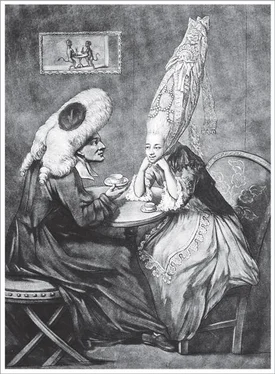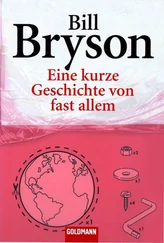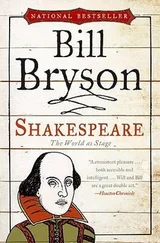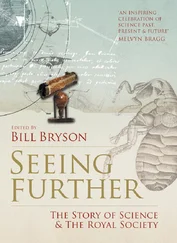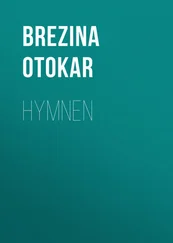Bill Bryson - At Home
Здесь есть возможность читать онлайн «Bill Bryson - At Home» весь текст электронной книги совершенно бесплатно (целиком полную версию без сокращений). В некоторых случаях можно слушать аудио, скачать через торрент в формате fb2 и присутствует краткое содержание. Жанр: Старинная литература, на английском языке. Описание произведения, (предисловие) а так же отзывы посетителей доступны на портале библиотеки ЛибКат.
- Название:At Home
- Автор:
- Жанр:
- Год:неизвестен
- ISBN:нет данных
- Рейтинг книги:4 / 5. Голосов: 1
-
Избранное:Добавить в избранное
- Отзывы:
-
Ваша оценка:
- 80
- 1
- 2
- 3
- 4
- 5
At Home: краткое содержание, описание и аннотация
Предлагаем к чтению аннотацию, описание, краткое содержание или предисловие (зависит от того, что написал сам автор книги «At Home»). Если вы не нашли необходимую информацию о книге — напишите в комментариях, мы постараемся отыскать её.
At Home — читать онлайн бесплатно полную книгу (весь текст) целиком
Ниже представлен текст книги, разбитый по страницам. Система сохранения места последней прочитанной страницы, позволяет с удобством читать онлайн бесплатно книгу «At Home», без необходимости каждый раз заново искать на чём Вы остановились. Поставьте закладку, и сможете в любой момент перейти на страницу, на которой закончили чтение.
Интервал:
Закладка:
The second duty, introduced in 1746, was based not on the number of windows but on the weight of the glass within them, so glass was made thin and weak throughout the Georgian period, and window frames had to be compensatingly sturdy. The well-known bull’s-eye panes also became a feature at this time. They are a consequence of the type of glass-making that produced what was known as crown glass (so called because it is slightly convex, or crown-shaped). The bull’s-eye marked the place on a sheet of glass where the blower’s pontil—the blowing tool—had been attached. Because that part of the glass was flawed, it escaped the tax and so developed a certain appeal among the frugal. Bull’s-eye panes became popular in cheap inns and businesses, and at the backs of private homes where quality was not an issue. The glass levy was abolished in 1845, just shy of its hundredth anniversary, and the abolition of the window tax followed, conveniently and fortuitously, in 1851. Just at the moment when Paxton wanted more glass than anyone ever had before, the price was reduced by more than half. This, along with the technological changes that independently boosted production, made the Crystal Palace possible.
The finished building was precisely 1,851 feet long (in celebration of the year), 408 feet across, and almost 110 feet high along its central spine—spacious enough to enclose a much admired avenue of elms that would otherwise have had to be felled. Because of its size, the structure required a lot of inputs—293,655 panes of glass, 33,000 iron trusses, and tens of thousands of feet of wooden flooring—yet thanks to Paxton’s methods, the final cost came in at an exceedingly agreeable £80,000. From start to finish, the work took just under thirty-five weeks. St. Paul’s Cathedral had taken thirty-five years.
Two miles away the new Houses of Parliament had been under construction for a decade and still weren’t anywhere near complete. A writer for Punch suggested, only half in jest, that the government should commission Paxton to design a Crystal Parliament. A catchphrase arose for any problem that proved intractable: “Ask Paxton.”
The Crystal Palace was at once the world’s largest building and its lightest, most ethereal one. Today we are used to encountering glass in volume, but to someone living in 1851 the idea of strolling through cubic acres of airy light inside a building was dazzling—indeed, giddying. The arriving visitor’s first sight of the Exhibition Hall from afar, glinting and transparent, is really beyond our imagining. It would have seemed as delicate and evanescent, as miraculously improbable, as a soap bubble. To anyone arriving at Hyde Park, the first sight of the Crystal Palace, floating above the trees, sparkling in sunshine, would have been a moment of knee-weakening splendor.
II
As the Crystal Palace rose in London, 110 miles to the northeast, beside an ancient country church under the spreading skies of Norfolk, a rather more modest edifice went up in 1851 in a village near the market town of Wymondham: a parsonage of a vague and rambling nature, beneath an irregular rooftop of barge-boarded gables and jaunty chimney stacks in a cautiously Gothic style—“a good-sized house, and comfortable enough in a steady, ugly, respectable way,” as Margaret Oliphant, a hugely popular and prolific Victorian novelist, described the breed in her novel The Curate in Charge .
This is the building to which we shall be attached over the next 440 or so pages. It was designed by one Edward Tull of Aylsham, an architect fascinatingly devoid of conventional talent (as we shall see), for a young clergyman of good breeding named Thomas John Gordon Marsham. Aged twenty-nine, Marsham was the beneficiary of a system that provided him and others like him with an extremely good living and required little in return.
In 1851, when our story opens, there were 17,621 Anglican clergymen; a country rector, with only 250 or so souls in his care, enjoyed an average income of £500—as much as a senior civil servant like Henry Cole, the man behind the Great Exhibition. For the younger sons of peers and gentry, going into the church became one of the two default career moves (the other was joining the military), so often they brought family wealth to the position as well. Many livings also carried substantial income through rents of glebe lands, or farmland, that came with the appointment. Even the least privileged incumbents were generally well off. Jane Austen grew up in what she considered to be an embarrassingly deficient rectory at Steventon in Hampshire, but it had a drawing room, a kitchen, a parlor, a study, library, and seven bedrooms—hardly a hardship posting. The richest living of all was at Doddington in Cambridgeshire, which had thirty-eight thousand acres of land and produced an annual income of £7,300—perhaps as much as £5 million in today’s money—for the lucky parson until the estate was broken up in 1865.*
Clergymen in the Church of England were of two types: rectors and vicars. The difference was a narrow one ecclesiastically but a broad one economically. Historically, vicars were stand-ins for rectors (the word is related to vicarious , indicating a surrogate role), but by Thomas Marsham’s day that distinction had largely faded away and whether a parson (from persona ecclesiae ) was called vicar or rector was largely a matter of local tradition. There was, however, a lingering difference in income.
A clergyman’s pay came not from the Church, but from rents and tithes. Tithes were of two kinds: great tithes, which came from main crops like wheat and barley, and small tithes, from vegetable gardens, mast, and other incidental provender. Rectors got the great tithes and vicars the small ones, which meant that rectors tended to be the wealthier of the two, sometimes very considerably so. Tithes were a chronic source of tension between church and farmer, and in 1836, the year before Queen Victoria ascended the throne, it was decided to simplify matters. Henceforth, instead of giving the local clergyman an agreed portion of his crop, the farmer would pay him a fixed annual sum based on the general worth of his land. This meant that the clergy were entitled to their allotted share even when the farmers had bad years, which in turn meant that clergymen had nothing but good ones.
The role of country clergy was a remarkably loose one. Piety was not necessarily a requirement, or even an expectation. Ordination in the Church of England required a university degree, but most ministers read classics and didn’t study divinity at all, and so had no training in how to preach, provide inspiration or solace, or otherwise offer meaningful Christian support. Many didn’t even bother composing sermons but just bought a big book of prepared sermons and read one out once a week.
Though no one intended it, the effect was to create a class of well-educated, wealthy people who had immense amounts of time on their hands. In consequence many of them began, quite spontaneously, to do remarkable things. Never before in history had a group of people engaged in a broader range of creditable activities for which they were not in any sense actually employed.
Consider a few:
George Bayldon, a vicar in a remote corner of Yorkshire, had such poor attendances at his services that he converted half his church into a henhouse, but he became a self-taught authority in linguistics and compiled the world’s first dictionary of Icelandic. Not far away, Laurence Sterne, vicar of a parish near York, wrote popular novels, of which The Life and Opinions of Tristram Shandy, Gentleman is much the best remembered.
Edmund Cartwright, rector of a rural parish in Leicestershire, invented the power loom, which in effect made the Industrial Revolution truly industrial; by the time of the Great Exhibition, over 250,000 of his looms were in use in England alone.
Читать дальшеИнтервал:
Закладка:
Похожие книги на «At Home»
Представляем Вашему вниманию похожие книги на «At Home» списком для выбора. Мы отобрали схожую по названию и смыслу литературу в надежде предоставить читателям больше вариантов отыскать новые, интересные, ещё непрочитанные произведения.
Обсуждение, отзывы о книге «At Home» и просто собственные мнения читателей. Оставьте ваши комментарии, напишите, что Вы думаете о произведении, его смысле или главных героях. Укажите что конкретно понравилось, а что нет, и почему Вы так считаете.
